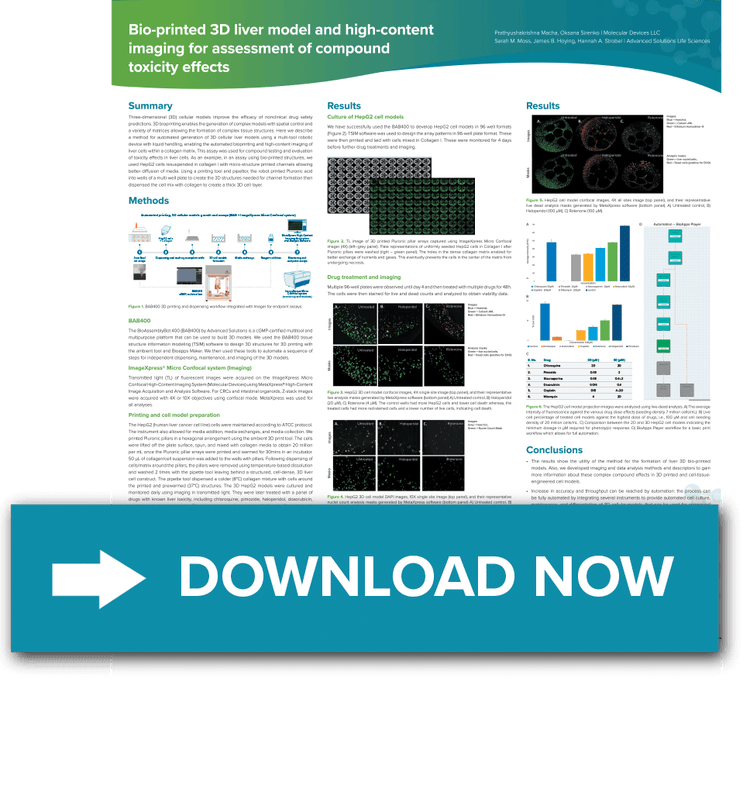
SCIENTIFIC POSTER
Bio-printed 3D liver model and high-content imaging for assessment of compound toxicity effects

Improve the reproducibility of non-clinical drug safety predictions using three-dimensional (3D) cellular models.
3D bioprinting enables the generation of complex models with spatial control and a variety of matrices allowing the formation of complex tissue structures. Here we describe a method for automated generation of 3D cellular liver models using a multi-tool robotic device with liquid handling, enabling the automated bioprinting and high-content imaging of liver cells within a collagen matrix. This assay was used for compound testing and evaluation of toxicity effects in liver cells. As an example, in an assay using bio-printed structures, we used HepG2 cells resuspended in collagen I with micro-structure printed channels allowing better diffusion of media. Using a printing tool and pipettor, the robot printed Pluronic acid into wells of a multi-well plate to create the 3D structures needed for channel formation then dispensed the cell mix with collagen to create a thick 3D cell layer.
